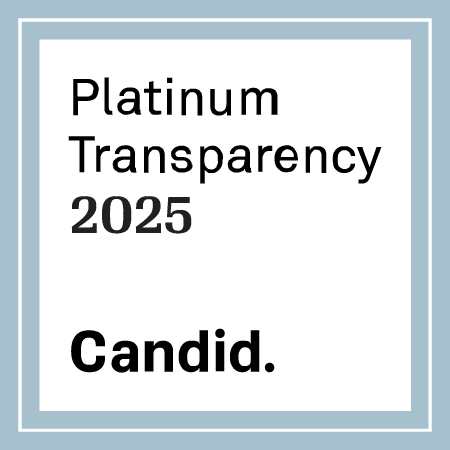Background
Each year on December 3, the world recognizes International Day of Persons with Disabilities (IDPWD), which aims to promote the rights and well-being of the more than 1 billion people worldwide who live with some form of disability.[1] While disability can affect anyone, the incidence and experience of disability globally and in the United States is undeniably gendered. In low- and middle-income countries, women represent 75 percent of the disabled population.[2] As a result of compounding discrimination and social, political, and economic barriers, women with disabilities are three times more likely than men to have unmet healthcare needs, three times more likely to be illiterate, and two times less likely to be employed.[3] The combination of these factors significantly increases the risk of experiencing violence for disabled women and gender nonconforming individuals.
Disability and Gender-Based Violence
Research has demonstrated that violence against women with disabilities is manifold. Compared with able-bodied women, across their lifetimes, disabled women experience higher rates of interpersonal violence (IPV), for longer durations of time, and by more varied perpetrators.[4] At the hands of intimate partners, family members, medical and support service providers, and others, disabled women also face disability-specific forms of violence, such as those relating to the administration of medication, daily living assistance, access to technology and transportation, and the use of adaptive equipment.[5] Moreover, women and girls with disabilities are more vulnerable to various forms of exploitation. A recent multi-country study found that women with disabilities are more likely to experience forced and child marriage, which also correlates with higher rates of IPV.[6] As we see, the different types of violence against women, especially those with disabilities, are mutually reinforcing.
Women with disabilities also face additional barriers when seeking to escape abusive situations. For example, some disabled women may rely on family, partners, or caretakers to provide essential physical or financial support, and thus feel unable to report or leave an abusive relationship. Additionally, information for those experiencing domestic violence may be inaccessible, due to technology or transportation restrictions by abusers or a lack of resources in adaptive formats, such as Braille, large print, or audio.
Even for disabled survivors of gender-based violence who are able to navigate these challenges and flee abusive environments, new obstacles arise.
Immigrant Survivors with Disabilities in the United States
In the United States — one of only a handful of countries that have not ratified the UN Convention on the Rights of Persons with Disabilities — disabled women and gender-diverse individuals face many hurdles, particularly within the U.S. immigration system. Discrimination; inaccessible legal, social, and medical services; and ill-equipped facilities and staff are only a few of the barriers that make it even more difficult for disabled immigrant survivors of violence to access justice and build safe and stable lives. These factors are compounded for those with additional marginalized identities, such as people of color, ethnic and religious minorities, LGBTQIA+ communities, and low-income individuals.
In many cases, the structural barriers begin even before day one. For disabled asylum seekers arriving at the U.S. southern border, the requirement to schedule an immigration appointment through the non-disability-friendly CBP One phone application creates an initial challenge,[7],[8] with further complications arising as they progress through the immigration process. With nearly 50 percent of immigrants with disabilities in the U.S. having low incomes and more than 35 percent having only limited English proficiency, disabled asylum seekers consequently often lack legal representation or information to fully understand their rights and due process procedures.[9] In immigration court, asylum seekers with visual or hearing impairments are frequently denied accommodations that would facilitate communication. Physically disabled immigrants may not be provided transportation or accessible courtrooms, and survivors of gender-based violence, including those with mental health and trauma-related disabilities, must suffer re-traumatization in providing their testimony.[10]
Outside of the courtroom, the violence continues. In Immigration and Customs Enforcement (ICE) detention centers, women and gender-diverse immigrants are disproportionately targeted and subjected to extreme punishments. In particular, individuals with mental and physical health challenges, LGBTQIA+ people, and survivors of sexual violence — especially perpetrated by correctional officers — are among the most frequently forced into solitary confinement.[11] Furthermore, most ICE facilities do not have the adequate staff or trained professionals to provide trauma-informed, gender-sensitive, culturally and linguistically competent health and psychosocial services to women, girls, and other survivors.[12] Such treatment (or lack thereof) serves only to exacerbate the systemic violence inflicted upon disabled immigrants and survivors.
How the Tahirih Justice Center addresses these intersectional challenges
Tahirih’s approach to supporting immigrant survivors of gender-based violence, including those with disabilities, responds to some of the most significant service gaps experienced throughout this process. By providing holistic, pro-bono legal representation, we ensure that survivors have access to culturally sensitive and trauma-informed counsel who will accompany them in their immigration journey and advocate for their rights.
We recognize not only the way that gender-based violence and migration in and of themselves are traumatic and often disabling, but also how the U.S. immigration system reinforces violence against immigrant survivors, and we work to disrupt and mitigate those harms. Our legal support is bolstered by wrap-around social service case management to secure clients’ access to critical resources, including housing, medical care, employment, language training, and more. We prioritize a whole-person approach that further ensures clients receive regular safety planning assistance as well as mental health screenings and counseling.
At Tahirih, we believe that everyone, regardless of ability, race, nationality, sexual or gender orientation, and more, deserves a life free from violence. This IDPWD and every day, we work toward a world where each person has the knowledge, resources, and agency to make the best decisions for themselves and build the safe and stable future they desire.
Learn more about disability rights and these great organizations working at the intersections of disability justice, gender justice, and immigrant rights:
Resources Referenced:
[1] United Nations, “International Day of Persons with Disabilities,” available at: https://www.un.org/en/observances/day-of-persons-with-disabilities
[2] Human Rights Watch, “Women and Girls with Disabilities,” available at: https://www.hrw.org/legacy/women/disabled.html
[3] United Nations Department of Economic and Social Affairs, “Disability and Development Report,” available at: https://social.un.org/publications/UN-Flagship-Report-Disability-Final.pdf
[4] Hughes, Rosemary B et al., “Prevalence of interpersonal violence against community-living adults with disabilities: a literature review,” available at: https://doi.org/10.1037/a0025620
[5] Ibid.
[6] Kanselaar, Samantha et al., “Exploring Disability as a Determinant of Girl Child Marriage in Fragile States: A Multicountry Analysis,” available at: https://www.jahonline.org/article/S1054-139X(23)00372-5/abstract
[7] Houston Immigration Legal Services Collaboration, “The New Asylum Rule – CBP One,” available at: https://houstonimmigration.org/the-new-asylum-rule-cbp-one/
[8] The Texas Tribune, “Migrants with disabilities struggle to access the U.S. asylum system, advocates say,” available at: https://www.texastribune.org/2024/03/29/texas-disabled-asylum-seekers/
[9] Echave, Paola and Gonzalez, Dulce, “Being an Immigrant with Disabilities: Characteristics of a population facing multiple structural challenges,” available at: https://www.urban.org/sites/default/files/2022-04/Being%20an%20Immigrant%20with%20Disabilities.pdf
[10] Human Rights First, “You Suffer A Lot: Immigrants with Disabilities Face Barriers in Immigration Court,” available at: https://humanrightsfirst.org/wp-content/uploads/2023/07/Disability-Report_Formatted_Final.pdf
[11] American Civil Liberties Union (ACLU), “Still Worse Than Second-Class: Solitary Confinement of Women in the United States,” available at: https://assets.aclu.org/live/uploads/publications/062419-sj-solitaryreportcover.pdf
[12] Ellman, Nora, “Immigration Detention Is Dangerous for Women’s Health and Rights,” available at: https://www.americanprogress.org/article/immigration-detention-dangerous-womens-health-rights/


